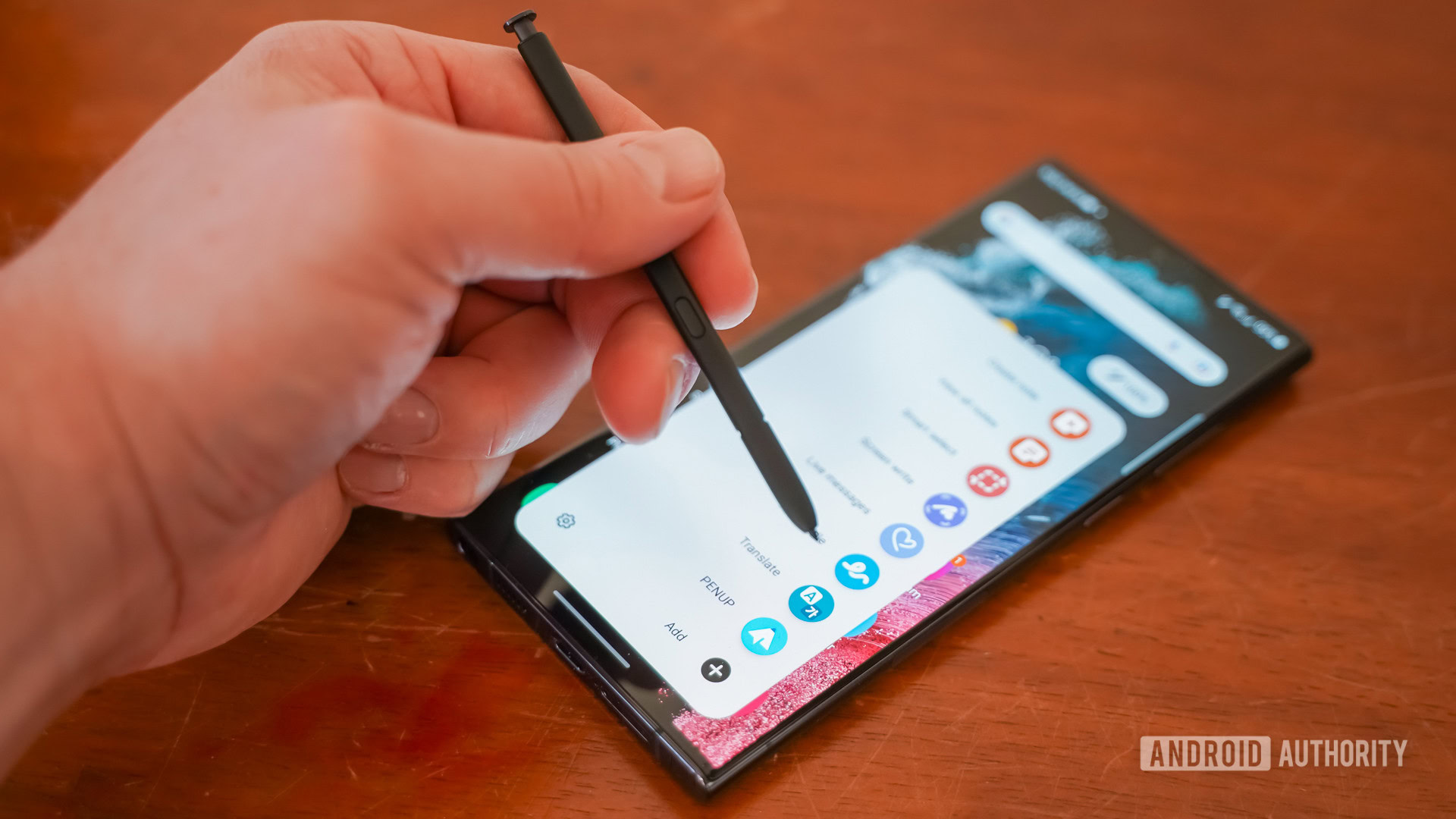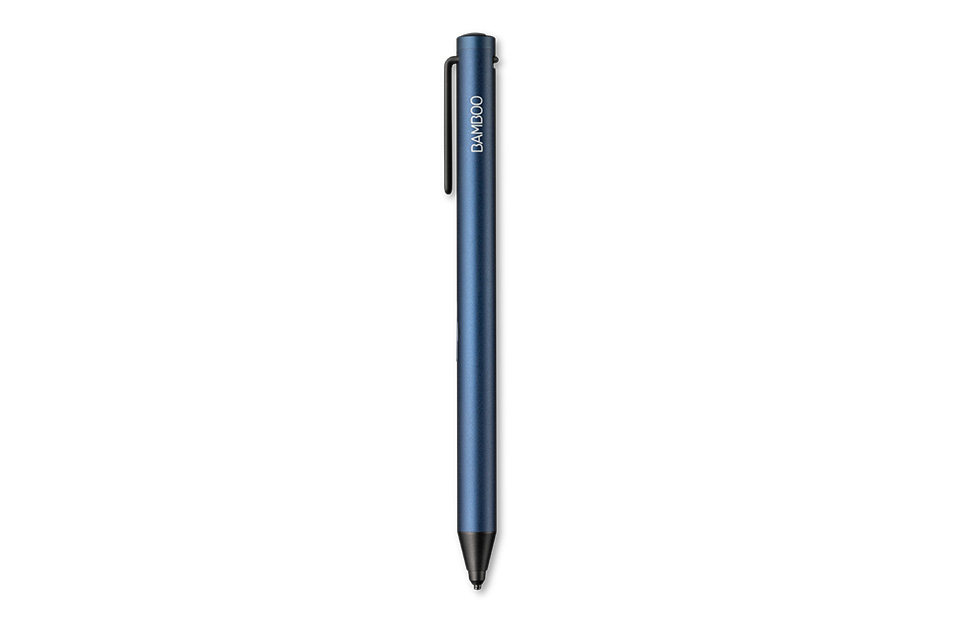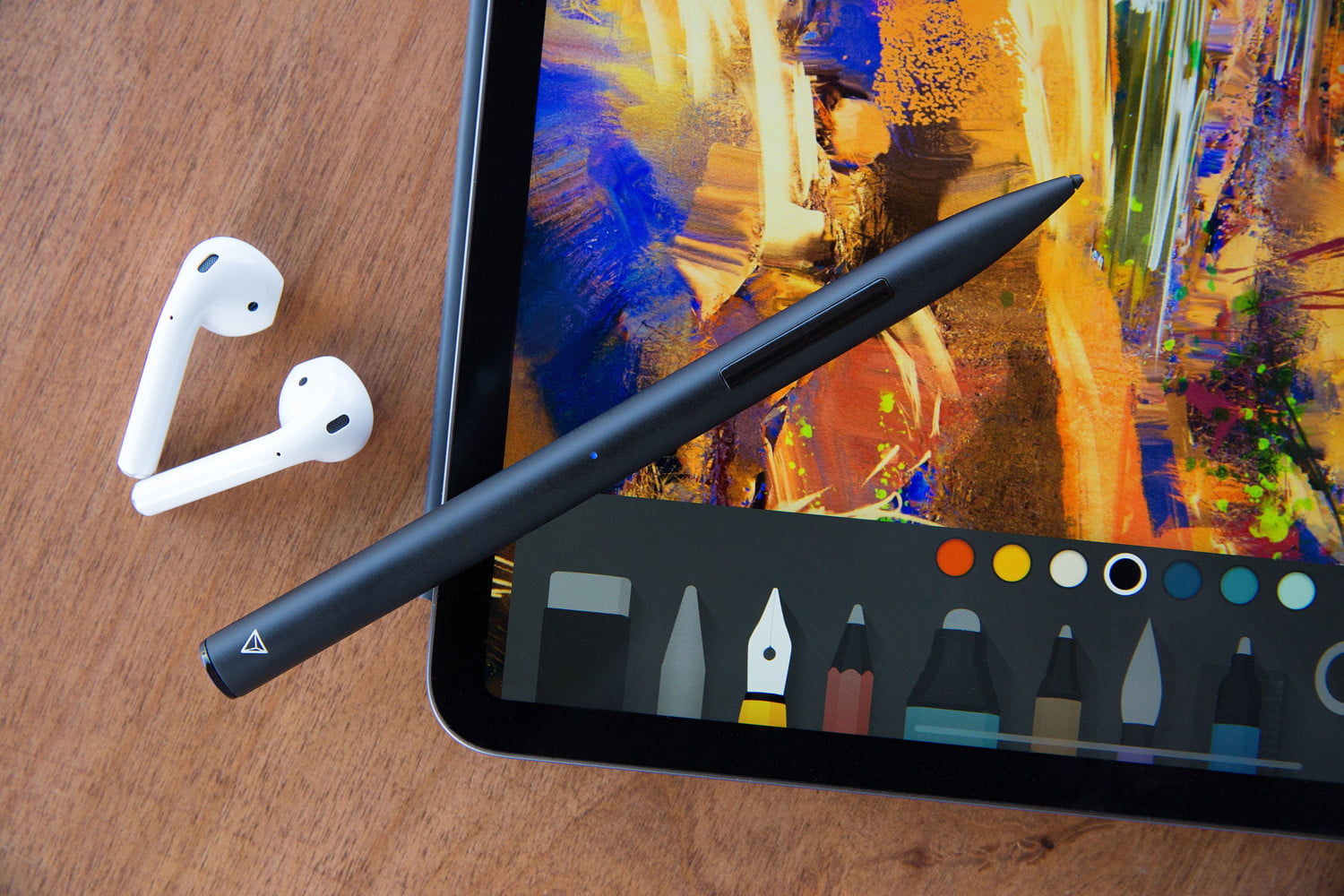1.Introduction
The growing popularity of smartphone styluses for both artists and note-takers can be attributed to several factors
Precision and Control: Smartphone styluses provide better precision and control than using fingers on a touchscreen. For artists, this means more accurate and detailed drawings, while note takers can get cleaner and more organized handwritten notes.
Creativity and expression: Artists find smartphone styluses invaluable for unleashing their creativity on a digital canvas. The stylus allows them to mimic the experience of traditional drawing and painting, opening up new possibilities for artistic expression.
Digital note-taking: Note-takers appreciate the convenience of using a stylus to jot down handwritten notes directly on their smartphone. This method combines the benefits of digital organization with the familiarity of pen and paper, making it easy to organize and find notes.
Multifunctionality: Many modern styluses offer multifunctional capabilities, such as pressure sensitivity and tilt detection. These features meet the needs of both artists and note-takers, providing a more versatile and immersive experience.
Accessibility: Smartphone styluses are widely available and come in a variety of price ranges, making them accessible to a wide audience. They are compatible with a wide range of smartphones and tablets, making them a practical tool for users of a variety of devices.
Touchscreens grow in size: As the size of smartphones continues to grow, it becomes more challenging to navigate and interact with them using fingers alone. Stylus provide a comfortable and efficient alternative, especially for precise tasks.
Digital integration: With the integration of advanced note-taking and drawing apps on smartphones, users are finding the stylus more valuable in harnessing the full potential of these applications.
Health and Hygiene: Some users prefer to use a stylus to keep their screen clean and smudge-free. Additionally, using a stylus can re
duce stress on the hand and wrist, making it a more ergonomic option for prolonged use.
Overall, the growing popularity of smartphone styluses stems from the desire for enhanced creativity, productivity, and ease of use in both artistic pursuits and everyday note-taking tasks. As technology continues to advance, styluses are expected to play an increasingly vital role in enhancing the smartphone experience for various user demographics.
1. Enhanced Precision: When using the stylus, the finer tip allows for more precise interaction with the smartphone's touchscreen. In contrast to the wider surface area of the finger, the stylus enables users to perform tasks with greater precision, such as tapping on small icons, buttons or links, that can be challenging with fingers alone.
2. Fine arts and drawing: For artists and designers, accuracy is paramount. A stylus provides a level of control that is essential for creating complex and detailed digital art. The ability to control stroke thickness and line pressure allows for a more natural and realistic drawing experience, similar to using traditional art tools.
3. Neat Writing and Note Taking: When taking notes or annotating documents on a smartphone, using the stylus ensures neat handwriting and drawings. This makes the notes more legible and organized, leading to better understanding and reference later.
4. Writing and Sketching: Whether it's jotting down quick ideas, sketching, or brainstorming concepts, a stylus provides a smoother and more fluid writing experience than using fingers. This is especially helpful for people who frequently engage in creative or professional work on their smartphones.
5. Precise editing and selection: When editing text or manipulating objects on the screen, a stylus allows for precise selection and modification, reducing the chance of accidental taps or unwanted actions that occur when using fingers Is.
6. Better gaming experience: For mobile gamers, a stylus can provide a competitive edge in games that require precision and speed. In games like first-person shooters or drawing-based challenges, a stylus provides a precision that fingers can't match.
7. Accessibility and Inclusivity: For individuals with fine motor skill difficulties or disabilities, a stylus can make smartphone interactions more accessible and enjoyable. The increased precision and control may help those who find it challenging to navigate touchscreens with their fingers.
8. Reduction in smudging and screen clarity: Using a stylus reduces the amount of fingerprints and smudges on the screen, keeping it clean and clear for longer. This is especially useful when viewing multimedia content or working on detailed tasks.
Overall, using a stylus on a smartphone enhances the overall user experience by providing greater precision, control, and comfort. Whether it's for artistic endeavors, note-taking, editing, or gaming, a stylus provides a valuable tool that complements and enhances smartphone interaction.
2.Active Styluses vs. Passive Styluses
Active and passive smartphone styluses are two different types of digital pens designed for use on touchscreens. The main difference between them lies in their functionality, technology and how they interact with the smartphone. Here is a detailed description of the main differences:
1.technology:
Active Stylus: Active styluses have built-in electronic components that require power (usually from a battery). These components enable additional features such as pressure sensitivity, tilt detection and palm rejection. The stylus communicates directly with the smartphone, transmitting data to provide a more advanced and accurate user experience.
Passive Stylus: Passive styluses, also known as capacitive styluses, do not contain electronic components or require a battery. They rely on the conductive properties of the materials used in the stylus tip to interact with a smartphone's touchscreen. They don't offer extra features like pressure sensitivity or palm rejection.
2.Pressure Sensitivity:
Active Stylus: Active styluses are pressure-sensitive, which means they can detect different levels of pressure applied to the touchscreen. This feature allows artists to vary the thickness and opacity of the lines in digital drawings, providing a more realistic and expressive feel.
Passive Stylus: Passive styluses do not provide pressure sensitivity. When using a passive stylus, the touchscreen only recognizes a single touch point, regardless of how hard or lightly the stylus is pressed.
3.Tilt Detection:
Active Stylus: The active stylus can detect the angle or tilt at which the stylus is held with respect to the screen. This functionality is especially beneficial for artists who want to replicate the effects of tilting a traditional pen or brush for shading and other artistic techniques.
Passive Stylus: Passive stylus does not have tilt detection capability. They can only provide a single touch point on the screen, regardless of the angle at which the stylus is held.
4.Palm Rejection:
Active Stylus: Active styluses often come with palm rejection technology, which allows the smartphone to ignore touch from the user's palm while using the stylus. This prevents accidental marks or gestures from interfering with the drawing or writing process.
Passive Stylus: Passive styluses do not have palm rejection capability, so users need to be more vigilant about inadvertent touches while using them.
5.Compatibility:
Active Stylus: Active styluses are usually specifically designed to work with certain smartphone models that support active pen technology. They may require pairing or specific apps to unlock their full potential.
Passive Stylus: Passive styluses are compatible with almost all smartphones and tablets with capacitive touchscreens. They work by simply touching the screen and require no special setup.
In short, active styluses offer a more advanced and feature-rich experience, especially for artists and users who require precise and subtle interactions. On the other hand, passive styluses are more universally compatible and simpler in their functionality. The choice between the two depends on the specific needs and preferences of the user.
When discussing the advantages and limitations of each type of smartphone stylus (active and passive), consider the following points:
Active Stylus:
Benefit:
Pressure Sensitivity: Active styluses are equipped with pressure sensitivity, which means they can detect different levels of pressure applied to the screen. This feature allows artists to create thicker or thinner lines depending on their pressure, mimicking the effect of traditional drawing tools such as pen and brush.
Tilt Detection: Many active styluses support tilt detection, allowing artists to vary the angle of the stylus and achieve shading effects similar to using graphite pencils at different angles.
Palm Rejection: Active styluses often come with Palm Rejection technology, which prevents accidental touch input from the user's hand on the screen while using the stylus. This feature ensures a smoother and more natural drawing experience.
Greater accuracy: Active styluses offer a higher level of accuracy and precision than passive styluses. They are ideal for detailed artwork and precise note taking.
Programmable Buttons: Some active styluses have programmable buttons that can be customized to perform specific tasks or shortcuts, increasing productivity and workflow.
Limitations:
Battery Dependency: The Active Stylus requires a battery to power the pressure sensitivity and other advanced features. Users need to keep an eye on the stylus' battery level and ensure it is charged for optimal performance.
Compatibility: The Active Stylus may have limited compatibility with some devices. Users must ensure that their smartphone or tablet supports the specific model of the Active Stylus.
Passive Stylus:
Benefit:
No Battery Required: The passive stylus does not require batteries or external power sources. They can be used immediately without worrying about battery life.
No pairing or setup: Passive styluses are typically "plug-and-play" devices that don't require pairing or complicated setup. Users can start using them immediately.
Broad Compatibility: Passive styluses work with most touchscreen devices including smartphones, tablets and even some laptops.
Durable and reliable: Without electronic components, passive styluses are generally more robust and less prone to technical malfunctions.
Limitations:
Lack of pressure sensitivity: Passive styluses lack pressure sensitivity, which means they cannot detect different levels of pressure on the screen. This limitation can affect the quality of the digital artwork, resulting in less expressive lines and strokes.
Limited features: Passive styluses don't offer advanced features like tilt detection or programmable buttons, which can be beneficial for artists looking for more creative control.
Less precision: Passive styluses can have slightly less precision than active styluses, making them less suitable for intricate artwork or detailed note-taking.
By explaining these advantages and limitations, readers will gain a better understanding of the two types of smartphone stylus, helping them make an informed decision when choosing the one that best suits their artistic or note-taking needs.
3.Criteria for Selection
When choosing a smartphone stylus for artistic endeavors and note-taking, several important factors come into play. Consider the following aspects before making a decision:
Pressure Sensitivity: For artists, pressure sensitivity is an important feature to consider. This allows the stylus to detect different levels of pressure, which affects the thickness and opacity of lines in digital artwork. Look for a stylus with a higher level of pressure sensitivity (for example, 2048 or higher) for a more expressive drawing experience.
Compatibility: Make sure the stylus is compatible with your specific smartphone or tablet model. Some styluses are designed for specific devices, so check compatibility information before purchasing.
Tilt Detection: Artists may also value tilt detection, which enables the stylus to detect the angle at which it is held. This feature allows for more realistic shading and is beneficial for creating subtle images.
Palm Rejection: The palm rejection technique is essential for both performers and note takers. This ensures that unintended touches from the user's palm or wrist do not interfere with stylus input, providing a smooth and natural writing or drawing experience.
Precision and Responsiveness: Look for a stylus that offers high precision and responsiveness on the screen. A stylus with minimal lag and precise tracking ensures that your artwork or handwriting appears as intended.
Battery life (for active stylus): If you choose an active stylus with advanced features like pressure sensitivity, check the battery life. Long battery life ensures uninterrupted use, especially during extended creative sessions.
Comfort and ergonomics: Consider the ergonomics and comfort of the stylus design. Look for a stylus that feels comfortable to hold for long periods of time, as artists and note takers often spend long periods of time using their styluses.
App Compatibility: Check if the stylus is compatible with popular drawing and note-taking apps. Compatibility with your favorite apps can enhance your creative workflow and productivity.
Budget: Stylus come in a variety of price ranges, so consider your budget when making a choice. While more expensive styluses may offer advanced features, there are also budget-friendly options that offer decent performance for casual users.
Reviews and Ratings: Read user reviews and ratings to understand real-world experiences with the Stylus. Pay attention to feedback from performers and note-takers, as their insight can be valuable in making an informed decision.
Additional Features: Some styluses may come with additional features such as programmable buttons or customizable settings. Evaluate whether these features suit your specific needs and preferences.
By considering these factors, you can choose a smartphone stylus that best meets your artistic or note-taking needs, leading to a more satisfying and productive experience with your device.
4.Top 10 Smartphone Styluses for Artists and Note-Takers
1.MEKO Disc Stylus
The Meko Universal 2-in-1 has dual tips; an anti-scratch fibre tip for general use and an ultra-thin disc tip for writing and drawing.
2.
Mixoo Capacitive Stylus
Mixoo Pen: Popular Universal, Capacitive Android stylus that also works with iPad and Microsoft touchscreens.
3.Adonit Mark Stylus ADMB
Enjoy this essential stylus for writing and drawing. The Adonit Mark offers precision and simplicity on any touchscreen. With Mark, you get a smudge-free experience, that looks and feels a touch above.
4.Adonit Pro 4 Stylus
Engineered as a singular piece for added stability for a precise line everytime. The Pro 4's body is made of lightweight aluminum with a efficient copper twist cap design for improved the texture and grip to take your experience to the next level.
5.Adobe Ink & Slide
It is an introducing creative hardware that makes sketching and drawing more natural and fluid. Designed to be used with the iPad, Adobe Ink is a fine-tip, pressure-sensitive pen built using Adonit Pixelpoint technology to give you greater creative control and unprecedented precision. 6.Adonit Dash 4
The Digiroot Universal Stylus is a budget option that offers impressive levels of accuracy and sensitivity for its price point. It's well-balanced
7.Digiroot Universal Stylus
The Digiroot Universal Stylus is a budget option that offers impressive levels of accuracy and sensitivity for its price point. It's well-balanced stylus
8.
Wacom Bamboo Tip: Best Wacom Stylus For Android
The Wacom Bamboo Tip belongs to the leading brand in the stylus market. It is a solid choice for those who take notes and do simple drawings or annotations
9.Kingone Stylus
10.Adonit Note+ Digital Pencil with Palm Rejection Pressure Sensitivity Support Tilt Stylus for iPad Pro 3rd
Another option from Adonit is the Adonit Note-M, the only stylus in the brand's vast lineup with the functionality of a mouse. With full mouse functionality












Comments
Post a Comment